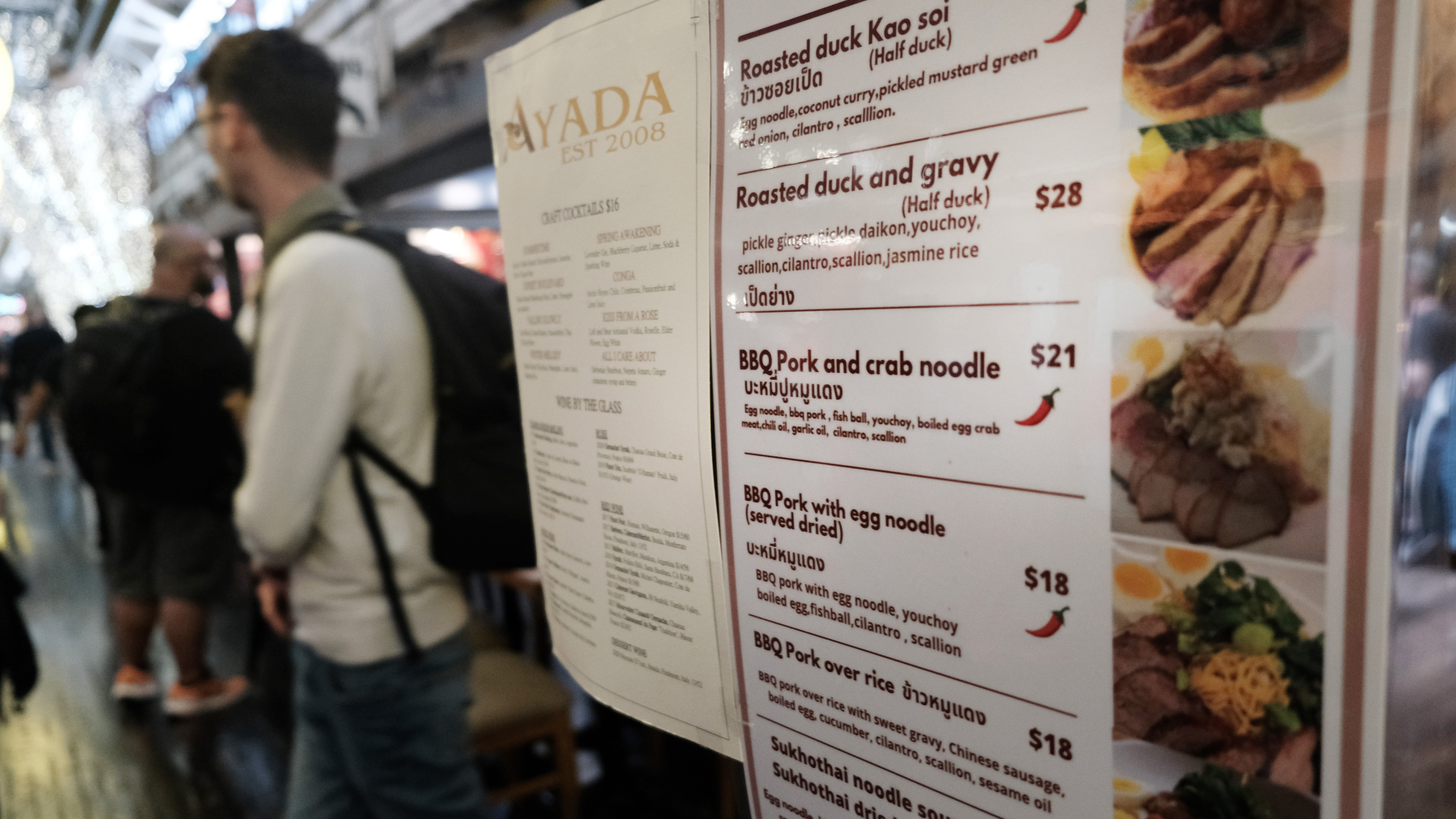
Are we entering a world of surge dining?

How much is an Uber? Depends on when you’re riding.
How about flights? Depends on when you book.
Highway tolls? Depends, sometimes, on how many people are on the road.
Electric bill? Depends on the season, even the minute.
We treat these as givens — sometimes annoying givens — of the modern economy. But what about the price of a burger? Are we ready to see moving price tags at restaurants?
This is called dynamic pricing, and the restaurant industry, until recently, hadn’t quite cracked it.
“If you think restaurants — menus, things are printed, people are used to coming into a restaurant, receiving a menu, it’s sort of fixed,” said Timothy Webb, an assistant professor at the University of Delaware’s hospitality and sport business management program.
Industries that can change prices in real time have the technology to do that. Restaurants and their customers were not as digitally inclined where food was concerned — until the pandemic.
“After the pandemic drove the industry towards more digitization, then it became much more easy to change prices based on a variety of factors multiple times,” said Ashwin Kamlani, CEO of Juicer, which sells a service that allows restaurants to rapidly change their prices on their digital menus, whether that be online ordering or a drive-through. Its clients include Salad Box and Carrot Express.
Basically, with digitization restaurants have unlocked new capitalism powers. Powers like… surge dining?
“So look as a company we avoid using the word ‘surge,’” Kamlani said. “Because to me as an Uber customer surge means quite a drastic increase. If it’s raining in New York City I might pay two, three, or even four times what it usually is. That is not what we’re talking about here.”
What we’re talking about, Kamlani said, is a difference of say 50 cents or so for $10 wings. If it’s Superbowl Sunday and everyone’s ordering them, the price might go up slightly.
But dynamic pricing is just as or more likely to lower costs for customers.
“If there are slow times in a restaurant, and there always are, those are great times for restaurants to use discounts or discounted pricing to encourage guests to order during those time periods,” said Noah Glass, CEO of OLO, an online ordering platform used by restaurants like PF Chang’s and Five Guys.
“It’s really about kitchen maximization,” he said.
Chains like Dave & Buster’s already have plans to roll out dynamic pricing models. And more innovations are on the horizon. Restaurants could soon start using rapidly-changing prices to manage their inventory.
“If chicken is running low, or chicken is running high and we need to sell more chicken,” Glass said, a restaurant could have a sale on chicken dishes, or move the item to a more prominent place on the menu.
When airlines and hotels use dynamic pricing, they’re actually doing more than just managing supply and demand. They’re also targeting customers.
“Like airlines know that business travelers tend to book late, and they can take advantage of that market,” said University of Delaware’s Webb. A business traveler’s not going to miss a meeting for a million-dollar deal over $100 on a flight — so last minute bookings cost more.
On the flip side, “the higher prices also ensure there are seats for those customers too,” Webb said.
This kind of pricing, where different customers are targeted for different pricing, is known as variable pricing, Webb said. And getting it to work at restaurants is tricky.
It would be hard, traditionally, to know who is willing to pay more when they walk in, and setting aside seats for those high paying customers would be fraught, said Webb. “You can’t put preference to seating one guest over another right?”
Not in person, no, but online? Oh yes you can.
“The online environment and delivery naturally creates two different segments, two different customer bases,” Webb said.
There are apps now like Dorsia that let (very) high paying diners make last minute reservations at places they would otherwise not be able to.
In a more pedestrian sense, restaurants know who is ordering through third party delivery apps like Uber Eats and DoorDash, and they sometimes charge those customers more, because the delivery services take a cut and these kinds of orders aren’t as profitable for the restaurant.
OLO’s Noah Glass says on really busy days, some restaurants may raise delivery prices temporarily so they can focus on more profitable sit down diners. “It would be silly for a restaurant not to prioritize their most profitable channels first,” he said.
But targeting can work in favor of customers too, said Juicer CEO Ashwin Kamlani. “If I know you’re a loyal customer of my restaurant and you come all the time, then perhaps if it’s a really busy night I might say, ‘Ok look, for first time people who are ordering I’m gonna increase the prices a little bit cause there’s so much demand, but as a thank you to my loyal customers I’m going to maintain the original price, and I’m going to tell them that.’” Seating preference could be given too, he says.
So in a lot of ways the brave new world of restaurants is a lot like the old world — happy hours, dinner specials, giving thank yous to regulars — just digital, data driven and a lot more fine-tuned.
There’s a lot happening in the world. Through it all, Marketplace is here for you.
You rely on Marketplace to break down the world’s events and tell you how it affects you in a fact-based, approachable way. We rely on your financial support to keep making that possible.
Your donation today powers the independent journalism that you rely on. For just $5/month, you can help sustain Marketplace so we can keep reporting on the things that matter to you.

















